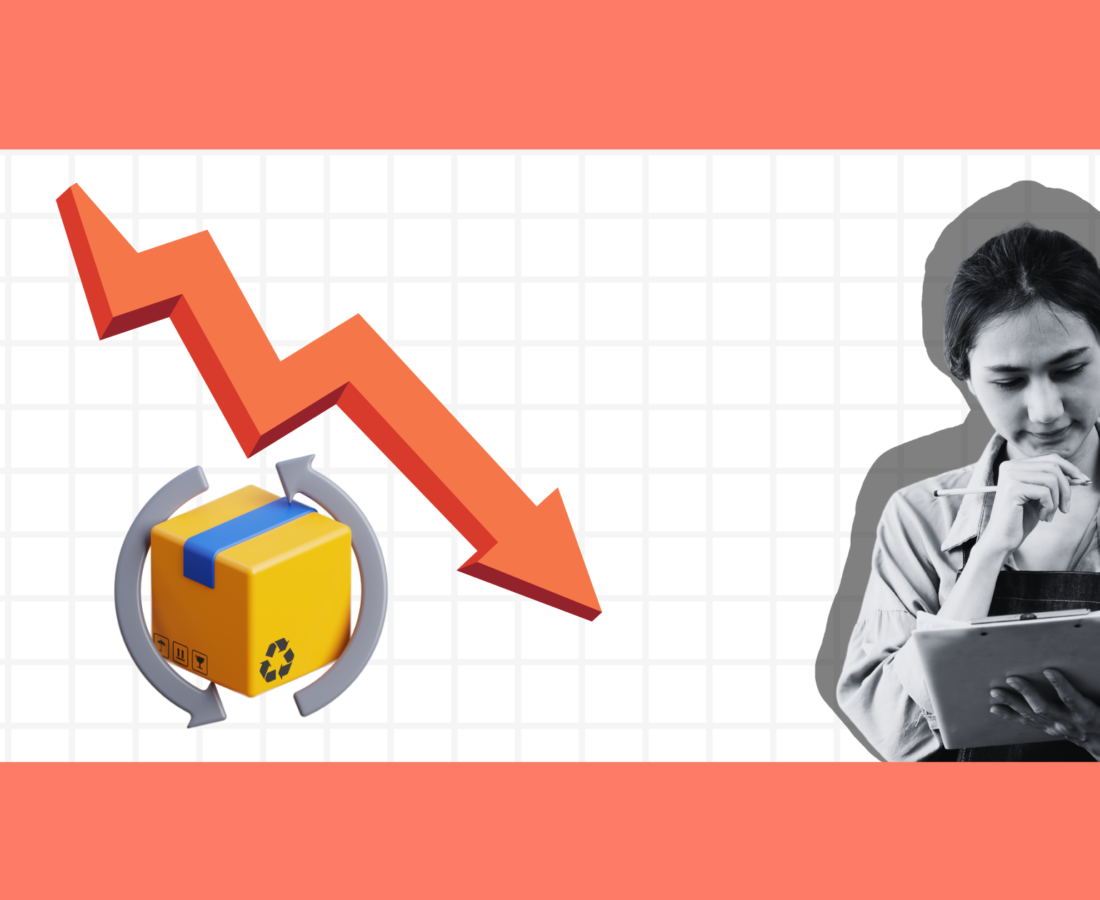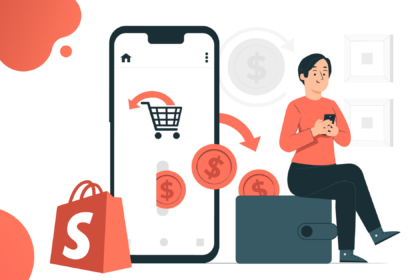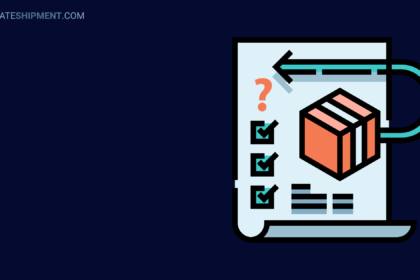Here’s the thing — returns are a great benefactor to your CX but that’s only when they’re handled right.
However, if they are left unchecked and run rampant, they can have serious consequences for your business across multiple areas.
Therefore, it is important to address a high return rate to ensure you handle returns effectively.
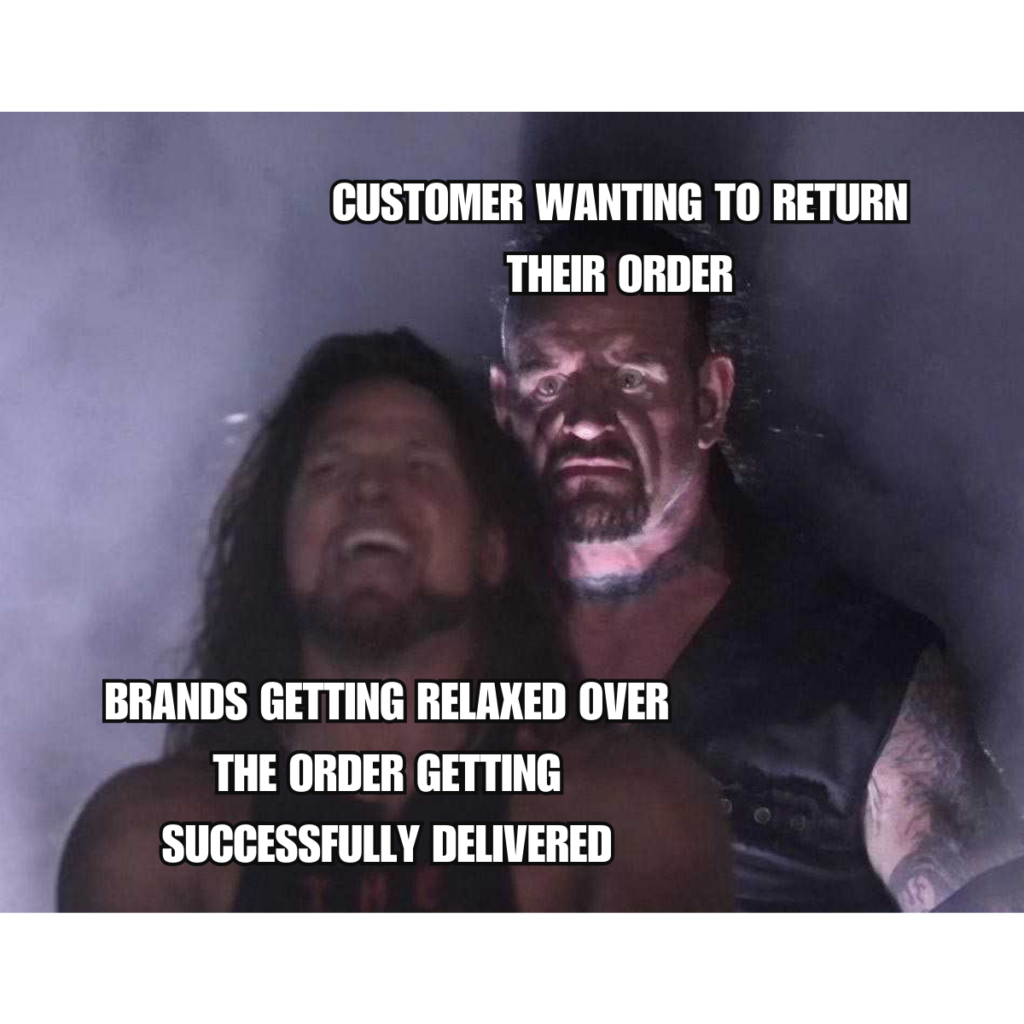
What Happens When Your Return Rate Is High?
To start with the most pressing issue up front, frequent returns lead to several operational challenges like increased workload and complexities for the staff from restocking inventory that is already time-consuming and expensive.
To add more trouble, a lengthy and difficult return process also has the power to hurt customer relationships and can erode your customer’s trust in your brand. These dissatisfied customers are prone to share their negative experiences, thereby hurting your reputation.
Ultimately, both these occurrences represent a loss in revenue, directly impacting profit margins. Not to forget the increase in the risk of fraudulent returns and refunds that come with them.
But there’s got to be a logical explanation behind everything right? Return rates being high is a phenomenon but why do they happen? Why do customers return their purchases, for which they’ve waited for long enough?
Why Do Customers Return Items?
According to NRF, The average return rate for e-commerce stands at around 18% — almost double the rate of returns at a physical store. When you see this and your first assumption is customers returning their purchases because they looked different online, congratulations, You’re correct!
Remember, understanding why customers return products is crucial in cutting return rates. Hence, we’ll go further on the most common reasons:
- Product issues: Mismatches in sizing/color/style, faulty products, or products not simply living up to the customer’s expectations — you name it. All of the above are immediate return triggers. Customers at physical stores touch and feel the product they’re about to purchase, but since the room for this is eliminated in e-commerce, there’s a high chance that the product doesn’t live up to their expectations in terms of quality or performance.
- Order issues: On the same lines as product issues, these are cases when the wrong item or quantity is shipped out, when the customers change their minds or make an impulsive purchase, or when the order gets delayed or damaged to the extent that the customer no longer needs it.
- Customer issues: Hate to say it but not all returns are valid. Some customers wear items and then return them for a refund in an act called ‘wardrobing’. These customers are serial returners who don’t really intend to keep their purchase.

As we touched upon earlier, analyzing common return reasons can be a great start in implementing tailor-made strategies to address these issues and reduce return rates. But before we get to the ‘how’, there’s something more important to take note of. The stakes in a story, the motive in a crime, the science in sci-fi — why do e-commerce merchants need to cut down return rates in the first place?
Why Does Reducing Product Returns Matter?
Apart from preventing all the stuff that we covered in the part that talked about the things that happen when your returns rate is high, reducing the number of products being returned, also has other great deal of benefits for your business.
- Despite manual processes, lower return rates translate to a reduction in return processing time for your customer support and operations teams
- Understanding the true cost of returns helps you make cost-cutting decisions that impact your bottom line and help you save on returns-related revenue
- With streamlined international operations (less time taken for returns), there is a huge opportunity to provide an enhanced return experience for your shoppers
- Customers satisfied with their returns experience are more likely to return, thereby leading to an increase in repeat purchases
What – check, why – check, and that brings us to the final question — how. How can return rates be reduced to ensure the long-term success of your e-commerce business? Here are some strategies to do exactly that.
How To Keep Return Rates In Check?
Product-related improvements
Make sure you try as much to replicate the shopping experience of a physical store. This can be achieved through:
- Detailed information about the extensive features, the exact dimensions, the materials it is made up of, and care instructions, if any.
- High-quality images and videos that showcase the product in 360 degrees across multiple angles
- Accurate sizing information and recommendations (70% of all e-commerce returns are size-and-fit related)
- Encouraging customers to share their experiences on a particular product to motivate others to make a decision
- Major brands such as Gucci, Burrow, and Allbirds have been integrating with Augmented Reality (AR) solutions to display how the product would look at the customer’s place or how they would look in a particular outfit
Such comprehensive information about the product gives the shopper even more knowledge on what they’re getting into and prevents returns arising from impulsive decisions.
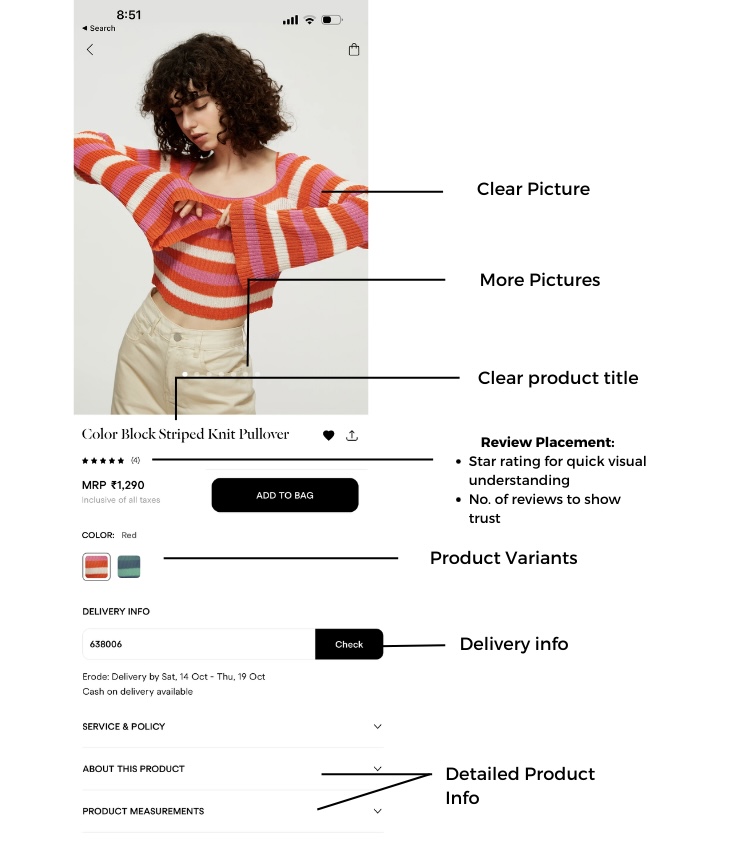
Optimizing the post-purchase CX
Did we mention that returns are a necessary evil? If not, here’s it. Returns might seem like a headache when you see them coming in initially but with the right CX efforts, you can not just minimize returns but can also ensure that your customers don’t consider returns as a ‘bad thing’ and still choose to shop with you.
Might seem like a domino effect but delivering products promptly and safely holds the power to reduce the likelihood of returns due to delayed or damaged shipments. For delays, ensure that there is transparent communication via regular shipping updates so that your customers don’t blame you for the delay in the first place. To prevent damaged goods and thereby reduce the return rate, you need to protect the package’s contents with high-quality packaging.
In the event such incidents happen despite strict measures and the return is initiated, proper and proactive support from your end can mitigate frustration and ensure that your customers give you another chance. For instance, you can start by acknowledging the mistake, ensuring that an action has been taken (refund, replacement, or offering discounts on upcoming purchases as compensation), etc.

Not just shipping and delivery but even return experiences play a significant role in optimizing your post-purchase CX. While this may seem like a long game, making improvements to your returns process indeed has the power to cut down returns.
This starts with a clear and concise returns policy that highlights return windows, non-returnable items, and more; moves to a seamless returns experience that removes any kind of hassle and makes the whole process stress-free thereby improving customer satisfaction, fostering trust and loyalty; and ultimately ends with the opportunity to collect customer feedback and gain insights into returns data that can help pinpoint issues and lead to improvements that prevents return in the future.
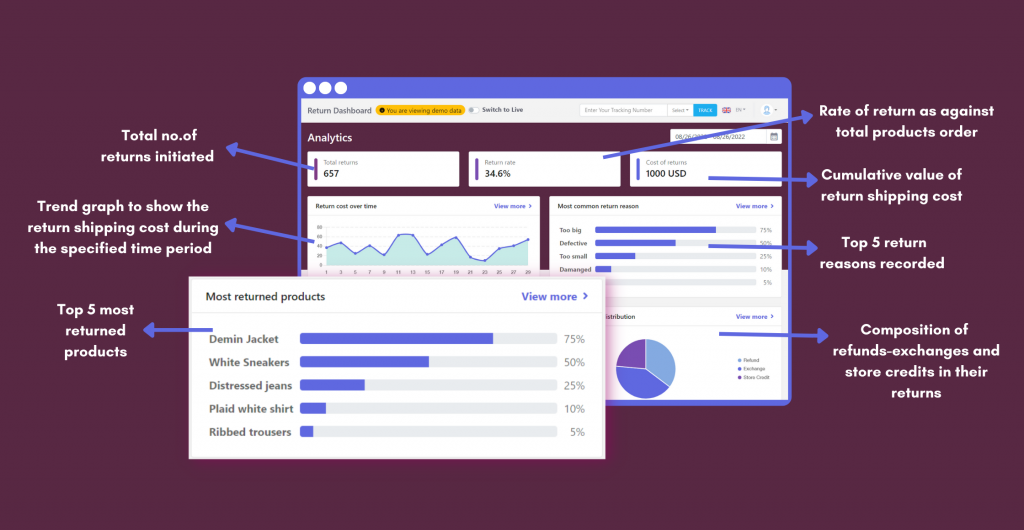
Promote exchange or store credits over refunds
“How is making the customer opt for an exchange or store credit over refunds/chargebacks going to help me cut down returns?” is a valid question to ask. And to answer that question, no it doesn’t. At least not directly.
While exchanges don’t reduce return rates per se, they help cut down the impact of frequent returns and make sure you’re spending much less than what you were going to.
Here’s how it works.
An exchange instead of a refund on product returns means you still have to pay for all the return-associated costs such as processing, replacements, and labor costs.
However, here’s where things get different. In cases of returns like a damaged product, a late delivery, or one from a wardrobing customer, there’s a possibility that a refund might be the last time you hear from the customer. By simply replacing money with another product, you now have an opportunity to not just keep the sale but you can also provide an even better CX to delight and build loyalty.
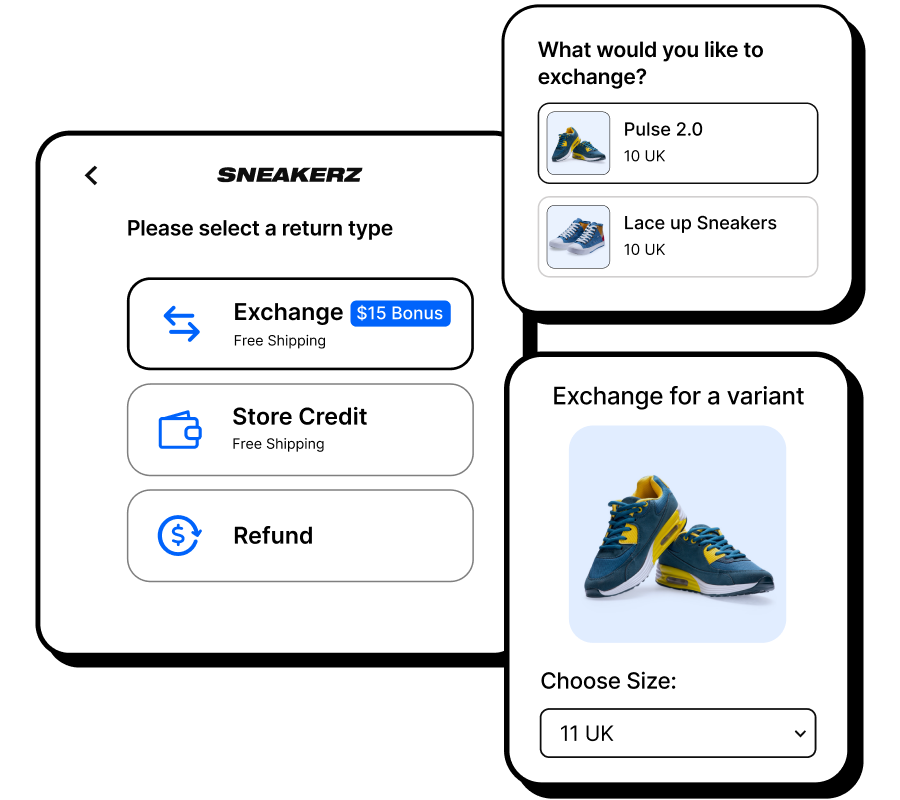
P.S. This doesn’t mean you simply eliminate offering refunds altogether as it can put the customer in a spot, i.e., force them to keep purchasing and result in a bad return experience. Instead, you can get creative and encourage exchanges or store credits over refunds via incentives.
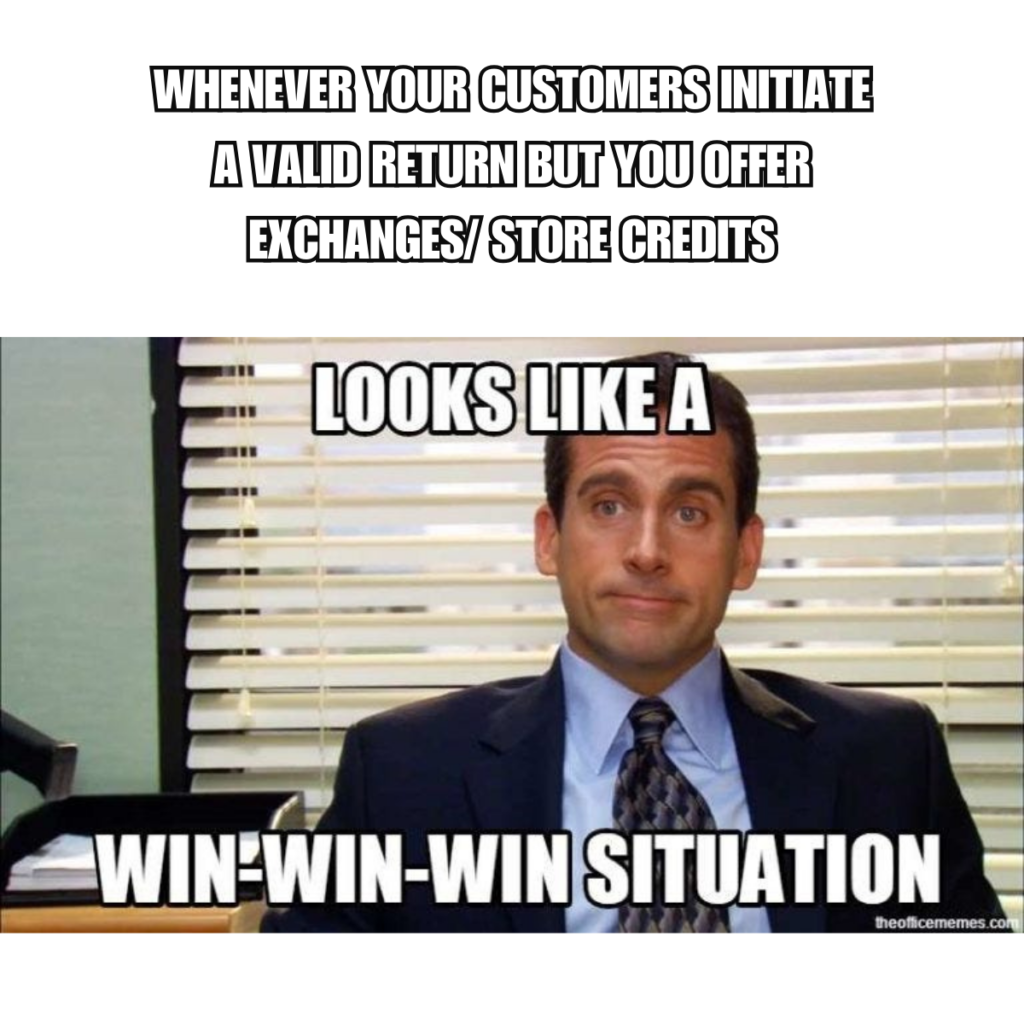
What's Next?
Returns are not just inevitable but are absolutely necessary for every business. Cutting down return rates doesn’t mean you simply avoid allowing returns at all (that can do more harm than good). Instead, you can try to cut down unwanted returns wherever possible to reduce workload, costs, etc.
The steps that we’ve covered in this article should give you insights into how you can proceed with reducing your returns. Instead of manually implementing them (the hard way), you can easily take control of all your returns from a returns center that makes the initiation self-service, automates the process, provides intelligence, and retains revenue.
LateShipment.com’s Returns Experience Management helps you do just that. LateShipment.com is an incredibly simple way of managing e-commerce returns — fully self-serve and automated for you and your shoppers alike.
Learn more about how LateShipment.com’s Returns Experience Management can work for you, help you reduce your store’s return rates, and offer return experiences that your customers truly love — talk to us today.
